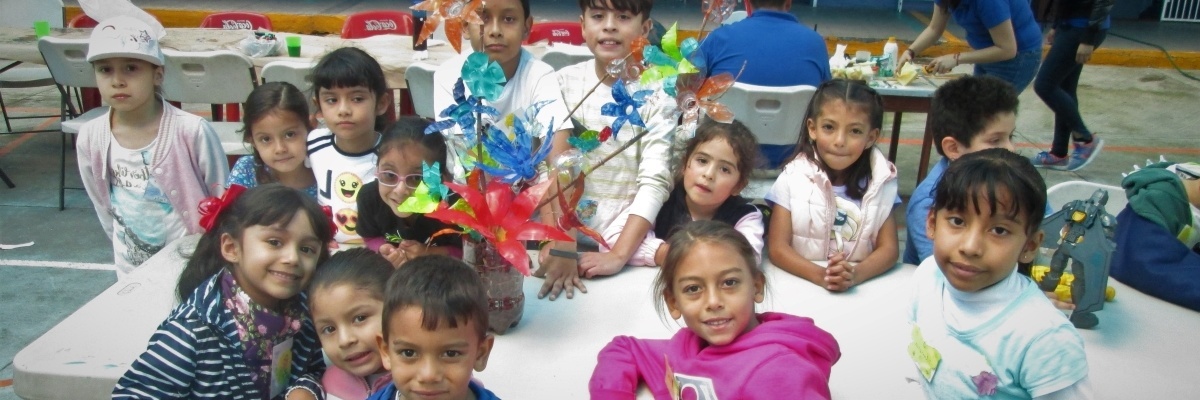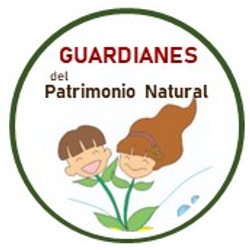We love more what we know more. I am sure that you have a lot to share from what you know about the issues of Natural Heritage, and in general about the care of our environment and wildlife, so it is worth knowing the materials and the methodology of the Program well, as well as you inform yourself more freely about it. Review the basic program materials here.
This will allow you to manage your Heritage Guardians much better, since questions and new approaches will normally arise, as well as it will be necessary to properly guide the debates and clarify doubts, and don't worry, it is not necessary to be an expert in the environment, the most It is important to be open to learn and, above all, to create an environment of trust between all those involved. Make sure you have the location of the project -including if you need a special permit for its use-; It can be a school room or community center, a playground, a gym, or other. Prepare in this phase all the materials that you will need as a guide, and let the participants know that they will have to anticipate those they will provide themselves; all of them are easy to get.
The Guardians of Natural Heritage are, especially, children and young people who are trained to know and take action in relation to life on the planet, its care and the participation of all. As various themes are connected through Guardians -from animal life to dialogue with an expert or authority- a positive response to the call is to be expected; however, we recommend that you talk about the project with your close contacts, such as brothers and sisters, cousins, neighbors, and friends… perhaps they will be the first members of your local group of Guardians of Natural Heritage!
Now, we have to integrate more participants! Think of simple and attractive ways to design a call so that more people know about it, and sign up. For example, you can use your social networks, your contacts, or design a fun poster; remember that you can use sheets of colored recycled paper for your poster. At the same time, talk to other people who will be your allies, especially other adults who help you develop the activities, we recommend one adult for every ten participants, as well as locate and talk to people in your area who have something to contribute . For example, a biology teacher, a person responsible for the care of the public gardens of your neighborhood, or an environmental police officer; one of them may be part of the activity when your Guardians look for someone to talk to about an action at the community level.
A group of Natural Heritage Guardians can have as many participants as you can handle; We recommend that there be at least 20 future guardians, so that the development of the experience is more enriching, since interaction is very important. From the first session you will be able to begin to locate possibilities for future organization, since the participants will choose an avatar among different animals that represent Natural World Heritage sites; This will be your pet and an instrument for various subsequent activities, and it will help you, for example, to quickly assemble groups, within the experience of the project, which also encourages integration and identification.
The activities that make up the program are sequenced, allowing a logic essentially guided by the scope of the topics, from personal awareness, to consumption in families or some consequences of climate change, worldwide. To do this, you must decide, based on your knowledge of the people of your locality, if the project is developed in 3 or even 4 weeks, being able to make the adjustments that you consider necessary; Perhaps you live in a place with a warm climate and it is good to carry out the activities early in the morning, or after the hottest hours, for example.
Let's walk! A very important and at the same time very attractive activity is to organize and carry out a visit to a natural site, as part of the training of your Natural Heritage Guardians. This is so because, like other course activities, the physical visit is a practical experience, and therefore, it must be used as much as possible. In Mexico, as an example, you can choose different sites depending on where you live. Let's think that you live in Mexico City, that means that you can think about planning a visit to a World Heritage site, like Xochimilco, in its natural part. In the same area of Xochimilco, there is a Ramsar site (an international category for relevant wetlands), which is the Ejidos de Xochimilco and San Gregorio Atlapulco Lake System. But there are other places within the City, such as Chapultepec or Ajusco, or the Desierto de los Leones.
Based on the resources that you have, you will choose a place, and you must anticipate what is necessary, from the permission and participation of the parents or guardians of your group of Guardians, to the entrance costs, if they exist, transportation, booking the visit, schedules etc.
Of course, they must plan together, what things will be most important to see, to observe. For example, at the Ramsar site, there is an environmental education center. If you live in a region close to a Natural World Heritage site, such as the Monarch Butterfly Biosphere Reserve, or if there is a national park, wildlife sanctuary, or beach or volcano nearby in your community, check it out. It is important that the visit and the experience be provided with knowledge, all the details and permits (another example: the necessary food). This visit will also derive a "digital memory", which can be shared with everyone, to infect other Heritage Guardians with enthusiasm.
As the day of the end of activities approaches, it will be necessary to close with a flourish. That day, the participants will sign their own "Commitment to the Environment" in a formal way, so that it is a moment of introspection, but also of projection abroad, to their environment, to their community. They will review the activities, experiences, new people and new friends they made during their training as Guardians of Natural Heritage.
So it's time to celebrate too! At the beginning of the closing week, propose that on the last day, a party be held - get together, so that everyone who likes can bring something to share that day, it can be some food or drink, music, organize some game or dynamic, a dance or a recital, maybe someone will bring a guitar and there will be live music! The interaction will be very good because they already know each other after weeks of activities, so everything will be very natural. That day there could also be an opportunity to visualize the formation of a new group of Guardians, to share what has been learned, and to continue in communication and carry out other subsequent meetings, independent of the course. Participation Diplomas for everyone will also be delivered there, so there's a lot to organize! It will be a very special day.









 "I welcome you to Guardians of Natural Heritage! Here, together we can help create a generation of Guardians, and your work is focused on guiding and facilitating that they join, help each other and together achieve actions to know and protect natural spaces, which may be those close to your community, or those that we know as World Heritage."
- Oliver Romo. Director of Difusión de Asuntos Internacionales Hypatia AC
"I welcome you to Guardians of Natural Heritage! Here, together we can help create a generation of Guardians, and your work is focused on guiding and facilitating that they join, help each other and together achieve actions to know and protect natural spaces, which may be those close to your community, or those that we know as World Heritage."
- Oliver Romo. Director of Difusión de Asuntos Internacionales Hypatia AC
